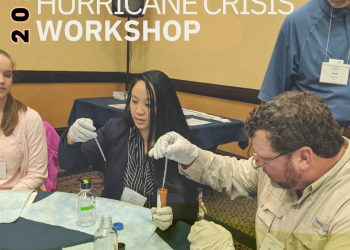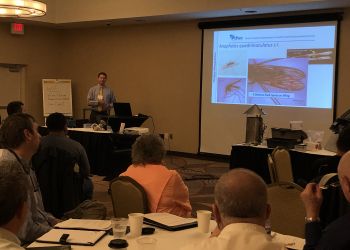By Whitney Thurman, NACCHO Health and Disability Fellow
 Intimate partner violence (IPV) is defined as intentional behaviors toward an intimate partner in the form of intimidation; emotional abuse; physical, sexual, and/or psychological assault; or any other type of abusive action that is part of a systematic pattern of power and control. IPV has been associated with many lifelong mental, physical, and sexual health consequences including depression, anxiety, post-traumatic stress disorder, suicide, injury, asthma, diabetes, unintended pregnancy, STI, HIV, and unsafe abortions.
Intimate partner violence (IPV) is defined as intentional behaviors toward an intimate partner in the form of intimidation; emotional abuse; physical, sexual, and/or psychological assault; or any other type of abusive action that is part of a systematic pattern of power and control. IPV has been associated with many lifelong mental, physical, and sexual health consequences including depression, anxiety, post-traumatic stress disorder, suicide, injury, asthma, diabetes, unintended pregnancy, STI, HIV, and unsafe abortions.
Anyone can experience IPV, but women with disabilities constitute one of the highest risk groups. The Centers for Disease Control and Prevention (CDC) estimates that 25% of women living in the United States are victims of IPV, but that rate increases to 60% for women with disabilities, who also tend to experience abuse for longer periods of time.
In general, any limitation to a person’s ability to independently perform activities of daily living increases the risk of abuse and neglect. Evidence suggests that women with disabilities may experience unique forms of abuse that are difficult to recognize—making it even harder to get the kind of help they need. The American Psychological Association lists several types of disability-specific abuse that may go unrecognized by healthcare and other service providers. These include denying access to a person’s assistive devices (e.g., wheelchairs, prostheses, or communication devices), transportation, healthcare appointments, medications, or food; forcing someone to take medication or lie in soiled undergarments; and/or inappropriately touching a person while assisting with hygiene or dressing.
Factors that increase risk of abuse for women with disabilities include increased risk of isolation; contact with multiple potential perpetrators; increased physical, emotional, and economic dependency as a result of disability; difficulties identifying disability-related abuse; and cultural/societal barriers that impede the ability to find and obtain assistance.
Public health plays an important role in protecting women of all abilities from IPV. These three strategies can help local health departments (LHDs) recognize abuse experienced by women with disabilities:
- Collect data. LHDs should routinely collect data regarding disability to support program implementation and evaluation. The American Community Survey includes six questions intended to identify vision, hearing, cognitive, mobility, self-care, and independent living difficulties, and these questions are suggested as a national standard for disability data.
- Incorporate universal screening for IPV. Early recognition and professional intervention can help to reduce ongoing IPV. However, evidence suggests that as few as 15% of women with disabilities are asked by medical professionals if they have experienced abuse. LHDs should consider incorporating routine screening to identify disability-specific abuse tactics for all women who utilize programs and services provided by the health department. The most widely used IPV assessment for people with disabilities is the Abuse Assessment Screen – Disability (AAS-D). LHD staff should offer support to women completing the screening tool, including assistance with reading or clarifying the questions, and LHD staff should ensure that women are alone when completing the screening tool, with no family members and/or other caregivers or aids in the room. To maintain trust, the staff administering the screening tool should also tell the women if they are mandated reporters of abuse before beginning the screening process, as well as explain what the reporting procedures are if the women disclose abuse.
- Implement educational and awareness programs. Educational programs can teach and reinforce safety and self-advocacy skills that empower individuals to defend themselves and to speak up to stop potentially abusive situations. LHDs can collaborate with community partners to implement educational programs for women with disabilities, as well as parents of children with disabilities. This type of educational activity can have important outcomes at the individual level, but LHDs should also seek to intervene at the community level by engaging in awareness campaigns and initiatives to reframe cultural norms around IPV. RespectAbility is a nonprofit, nonpartisan organization dedicated to fighting stigmas and advancing opportunities for people with disabilities. This organization has developed and compiled a number of resources related to sexual education, sexual health, and intimate partner violence for people with disabilities that LHDs may find useful in developing and implementing educational programs. Find additional resources here.
LHDs are tasked with ensuring the health and well-being of their communities; understanding and addressing the important issue of IPV among women with disabilities can help a vulnerable population attain their maximum level of independence and their full health potential.
The NACCHO Health and Disability Fellowship is supported by the Centers for Disease Control and Prevention (CDC), Cooperative Agreement #5NU38OT000172-05-00 and the NACCHO Health and Disability Program.






